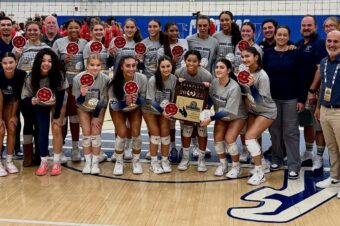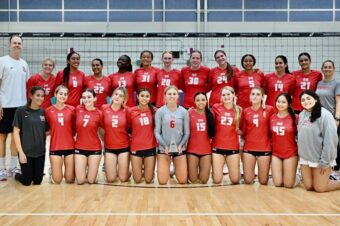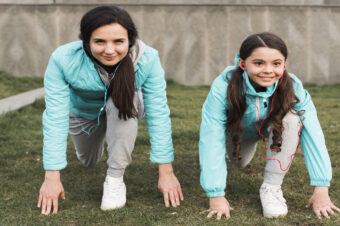

How to Fuel Your Body for Fall and Winter Training
BlogClub SportsHealth & FitnessHigh School Baseball/SoftballMulti-SportNewsProduct Reviews/Top Ten Lists/Resources/Tips November 12, 2024 Lauren Keating 0

Training during the fall and leading to the colder winter months differs from the warmer weather season. Despite not being as hot, athletes still need to focus on staying hydrated before, during, and after workouts. Eating right to fuel the body is equally important.
Whether you’re training for cross country, basketball, wrestling, or winter indoor track, fueling your body properly can make a huge difference in your performance and recovery.
Here’s a guide to help you power through the colder months with the right foods and hydration strategies.
Prioritize Carbohydrates for Energy
Carbohydrates are the body’s main source of fuel, especially for endurance sports and intense training sessions. During colder months, our bodies use more energy to keep us warm, which can deplete glycogen (stored carbohydrates) faster. Athletes should focus on complex carbohydrates, which provide a steady release of energy to fuel workouts and practices.
Examples of complex carbs for athletes include:
- Whole grains like oats, quinoa, brown rice, and whole-grain pasta
- Root vegetables like sweet potatoes and carrots
- Beans and legumes
For optimal performance, athletes should eat a meal rich in complex carbs two to three hours before training.
Closer to practice or competition, opt for quick-digesting carbs like a banana or a small granola bar.
Protein Is Key
During workouts, your muscles experience tiny tears in their fibers. This breakdown occurs because the muscles are pushed beyond their normal limits. Don’t be alarmed. During the recovery phase post-exercise, your body repairs these microtears by fusing muscle fibers together, making them stronger.
Over time, this breakdown and then repair leads to increased muscle strength and size, adapting the muscle to handle greater stress. But the repair process requires nutrients like protein and energy.
Colder weather can make muscles stiffer and more prone to strains. A diet rich in high-quality protein sources can aid recovery and prevent injuries.
High school athletes should aim for a source of protein at every meal and snack throughout the day to ensure they’re getting enough.
Protein sources for athletes include:
- Lean meats like chicken, turkey, and beef
- Fish and seafood, which are also high in healthy fats
- Eggs and dairy products like Greek yogurt
- Plant-based options like tofu, tempeh, beans, and lentils
Consume 20-25 grams of protein after a workout to help speed up recovery. This could look like a protein smoothie, a Greek yogurt parfait with berries, or a small serving of cottage cheese with fruit.
Don’t Be Afraid Of Healthy Fats
While carbs and protein are essential, healthy fats are often an overlooked part of an athlete’s diet. Fats provide long-lasting energy and are crucial for joint health, hormone production, and maintaining healthy skin during colder weather. Omega-3 fatty acids, in particular, help reduce inflammation and keep joints lubricated, which can be beneficial for athletes doing high-impact activities.
Sources of healthy fats for athletes include:
- Fatty fish like salmon, mackerel, and sardines
- Nuts and seeds such as almonds, walnuts, chia seeds, and flaxseeds
- Avocados and olive oil
Try to include a source of healthy fats in at least one meal per day. This could be adding avocado to a sandwich, or adding chia seeds in your oatmeal.
Stay Hydrated
Athletes don’t feel as thirsty in the cooler weather as in the heat. This makes staying hydrated more challenging. But hydration is just as important in winter as in summer. Even mild dehydration can lead to fatigue, muscle cramps, and decreased performance.
To stay on top of hydration goals, start your day off with a glass of water and aim to drink regularly throughout the day.
During practice, bring a water bottle and make it a habit to take small sips frequently. If you’re participating in intense activities or long practices, consider an electrolyte drink or coconut water to replenish lost minerals.
Another great tip is having soups and herbal teas that help with hydration during colder months.
Focus on Immune-Boosting Foods
Fall and winter bring cold and flu season, so a strong immune system is essential to prevent sickness and missed practices or games. Focus on foods that are high in vitamins, minerals, and antioxidants, for immune system support.
Some immune-boosting foods include:
- Citrus fruits like oranges, grapefruits, and lemons for Vitamin C
- Leafy greens like spinach and kale, which are high in Vitamin A and C
- Garlic and ginger, known for their anti-inflammatory and immune-boosting properties
- Yogurt and fermented foods like sauerkraut, which contain probiotics for gut health
A diet rich in whole foods can help you stay healthy and keep your energy up all season long.
Snack Smart
High school athletes often have long days that include school, practice, and other activities, making snacks essential to keeping energy levels stable. Choose healthy snacks that combine carbs, protein, and healthy fats to keep you fueled and focused.
Some snack ideas for athletes include:
- Apple slices with peanut butter
- Greek yogurt with granola and berries
- Trail mix with nuts, seeds, and dried fruit
- A smoothie made with milk, a banana, and a handful of spinach
By using these fuel strategies, you’ll be well-prepared for fall and winter training, giving yourself the best chance to perform at your peak.









No comments so far.
Be first to leave comment below.